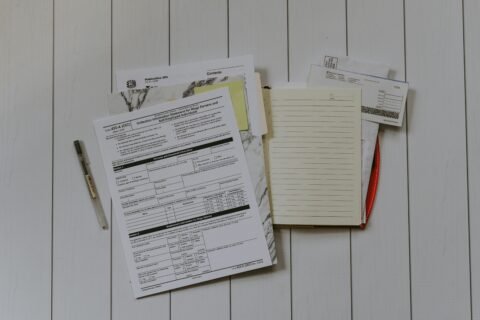When you’re creating RFI response templates, it’s essential to start by understanding your audience’s roles and preferences. This knowledge allows you to tailor your content, making it more engaging and relevant. Structuring the template with clear headings and concise paragraphs will guide the reader logically through the document. Don’t forget to include an executive summary, detailed answers with evidence, and some customization for specific needs. Regular reviews and updates will ensure your template stays current and effective. But how do you strike the right balance between detail and brevity? Let’s explore this further.
Understanding Your Audience
When creating RFI response templates, understanding your audience is paramount. You need to dive deep into audience analysis to craft a message that resonates. Start by identifying who’ll read your response. Are they technical experts, business executives, or procurement officers? Knowing their roles will help you tailor your communication strategy effectively.
Engage in thorough audience analysis. Research their preferences, pain points, and goals. This insight lets you anticipate their questions and address them proactively.
For instance, technical experts might appreciate detailed specifications, while executives prefer concise summaries focusing on ROI.
Next, align your communication strategy to match their needs. Use clear, jargon-free language if your audience isn’t technically inclined. Conversely, include industry-specific terms for a technically savvy readership. Your aim is to make the RFI response easily digestible.
Structuring the Template
A well-structured RFI response template is essential for conveying your message effectively and efficiently. Start by ensuring formatting consistency throughout the document. Use uniform fonts, headings, and bullet points to make the template visually appealing and easy to follow. This approach aligns with audience expectations, showing that your organization values professionalism and attention to detail.
Next, focus on template organization. Divide the document into clear sections, such as an introduction, company background, and specific responses to queries. Each section should be labeled with bold headings to enhance response clarity. This structure helps the reader quickly locate the information they need, making your response more user-friendly.
Additionally, use concise paragraphs and avoid jargon to maintain response clarity. A well-organized template guides the reader through your responses logically, ensuring they don’t miss crucial information. Remember, the goal is to make your responses straightforward and digestible.
Key Elements to Include
Having established a solid structure for your RFI response template, it’s time to focus on the key elements that will ensure your document is both comprehensive and effective. Start with thorough audience analysis; understanding who’ll read your RFI response is crucial. This allows you to tailor content relevance, ensuring each section addresses the specific needs and concerns of your audience.
Next, maintain tone consistency throughout the document. Your response should reflect your brand messaging, presenting a unified voice that aligns with your company’s values and identity. Whether you’re formal or conversational, keep it consistent to build trust and credibility.
Incorporate a clear executive summary. This section should provide a concise overview of your proposal, highlighting the most significant points. Ensure it’s compelling enough to grab attention and encourage a deeper read.
Include detailed answers to each RFI question. Be specific and provide evidence or examples to support your claims. This not only demonstrates your competence but also makes your response more persuasive.
Customizing for Specific Needs
Customizing your RFI response template for specific needs is essential to stand out among competitors and demonstrate your understanding of the client’s unique requirements. Begin by tailoring content to reflect the client’s industry, challenges, and goals. This shows you’ve done your homework and are genuinely interested in providing a solution that fits their particular context.
Next, address requirements explicitly mentioned in the RFI. Break down each requirement and match it with your offerings, highlighting how you can meet or exceed expectations. Use specific examples and case studies to illustrate your capability and reliability.
Ensure your language is aligned with the client’s terminology. This not only facilitates better understanding but also builds rapport by speaking their language. Customize sections such as the executive summary and key differentiators to reflect the client’s values and priorities. This personalized touch can significantly enhance your appeal.
Incorporate visuals like charts, graphs, and infographics to make your points more compelling and easier to grasp. A well-structured, visually engaging response can make a lasting impression. Remember, the goal of customizing is to make your response as relevant and persuasive as possible, showing that you’re the right partner for their needs.
Reviewing and Updating Templates
Maintaining the relevance and effectiveness of your RFI response templates requires regular reviewing and updating. Start by scheduling periodic reviews—quarterly or biannually works well. This ensures your templates reflect the most current information and industry standards.
When updating content, consider any changes in your products, services, or company policies. Has there been a shift in your market positioning? Have new technologies or methodologies emerged that you should highlight? Carefully revise your templates to include these updates, ensuring they’re as informative and accurate as possible.
Revising language is equally crucial. As industry jargon evolves, ensure your templates use current terminology. Check for clarity and readability; your responses should be concise yet comprehensive. Avoid overly complex language that might confuse the reader. Instead, aim for straightforward, professional communication that clearly conveys your message.
Additionally, gather feedback from your team and clients. They can offer valuable insights on what works and what doesn’t. Use this feedback to fine-tune your templates, enhancing their effectiveness.
Conclusion
Remember, crafting an RFI response template is like preparing a tailored suit—each stitch matters. By understanding your audience, structuring your content clearly, and regularly updating your templates, you’re ensuring a perfect fit every time. Think of it like a chess game; each move, from the executive summary to detailed evidence, leads you closer to winning. Keep refining, and your responses will always be a step ahead in the industry.
Passionate content writer and savvy blog publisher, Aamir crafts compelling stories and insightful articles that captivate and inform. With a knack for blending creativity and strategy, they bring fresh perspectives to every piece. Dive into their world of words and discover content that resonates.





